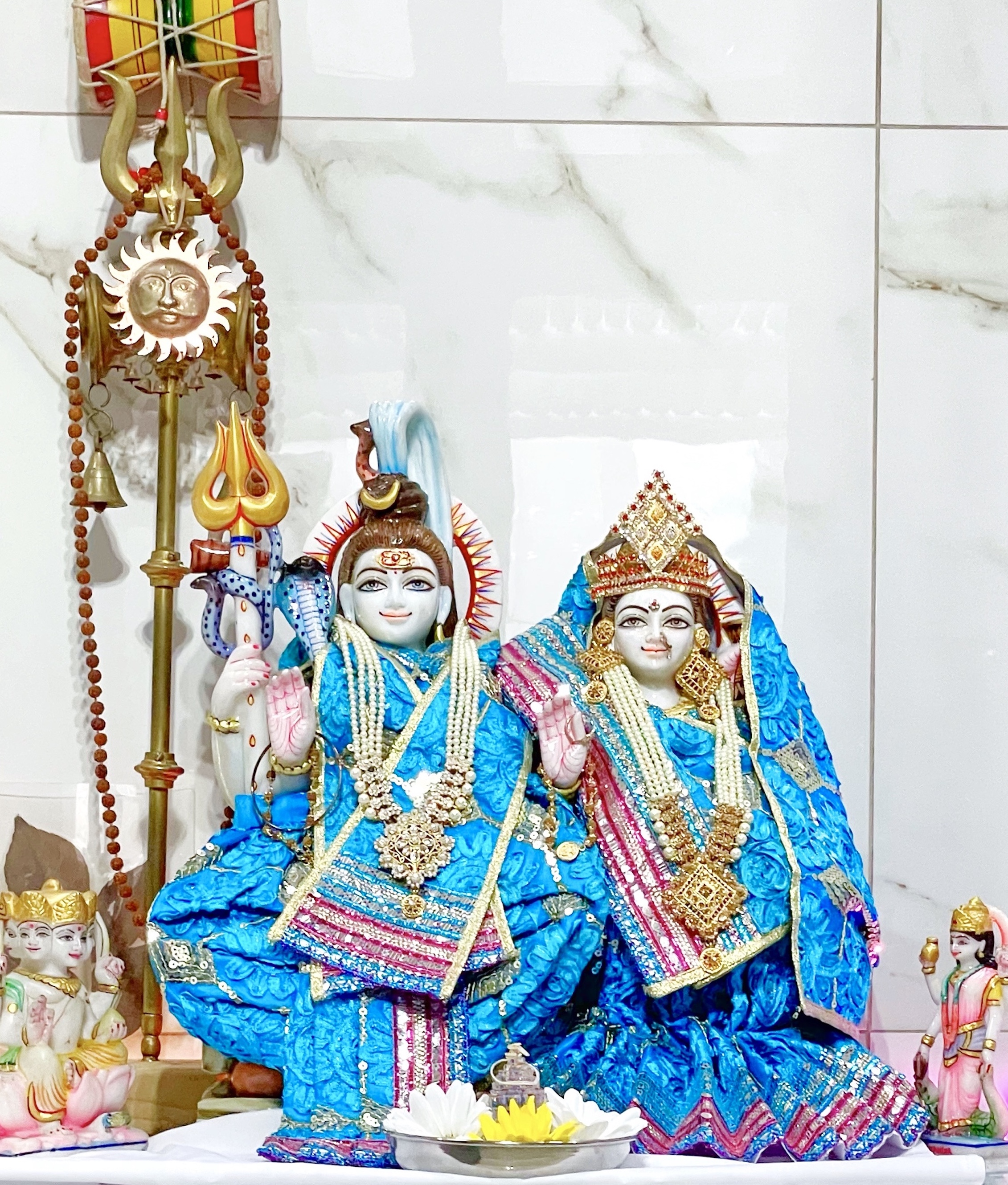Shivalaya UK is closed for public. We apologise for the inconvenience. Subscribe to our newsletter to be the first to know when we are opening.
Lord Shiva and Goddess Parvati
The divine union of Lord Shiva and Goddess Parvati is a symbol of balance, love, and unity.
Who are Lord Shiva and Goddess Parvati?
Lord Shiva, also known as Mahesh, is the destroyer in the Hindu trinity. His role is to annihilate evil and pave the way for renewal and transformation. Shiva embodies both the ascetic and the householder, a paradoxical deity who represents both detachment and active involvement in worldly life. He is often depicted meditating in the Himalayas, with a serene and powerful aura.
Goddess Parvati is the gentle and nurturing aspect of the divine feminine. She is the embodiment of love, fertility, and devotion, and the consort of Lord Shiva. Together, they symbolize the balance of power, creation, and destruction. Their union is the source of all creation in the universe, and they complement each other as equals.

The 12 Jyotirlingas
The 12 Jyotirlingas are sacred shrines of Lord Shiva spread across India. These are considered to be the most revered temples of Shiva, where he is worshipped in the form of a linga of light (Jyoti). Each of these temples holds great religious significance and attracts millions of devotees seeking blessings, spiritual enlightenment, and liberation.
Somnath (Gujarat)
Mallikarjuna (Andhra Pradesh)
Mahakaleshwar (Madhya Pradesh)
Omkareshwar (Madhya Pradesh)
Kedarnath (Uttarakhand)
Bhimashankar (Maharashtra)
Kashi Vishwanath (Uttar Pradesh)
Trimbakeshwar (Maharashtra)
Vaidyanath (Jharkhand)
Nageshwar (Gujarat)
Ramanathaswamy (Tamil Nadu)
Grishneshwar (Maharashtra)
Symbolism and Worship
Lord Shiva is worshipped in many forms—often as the cosmic dancer (Nataraja) or the meditative yogi. His symbol, the Linga, represents the formless aspect of God. Devotees of Shiva undertake pilgrimages to the Jyotirlingas and other sacred temples, seeking his blessings for health, happiness, and spiritual growth.
Goddess Parvati, revered for her motherly affection, is worshipped as the Divine Mother in many forms such as Durga, Kali, and Shakti. Together, they represent the inseparable forces of consciousness and energy, and their union teaches us the importance of harmony between action and stillness, creation and dissolution.